Via Francigena Part 12 route map |
Lucca ~ San Miniato ~ San Gimignano ~ Monteriggioni ~ Siena |
Distance: 169km (1,791/1,900km) |
S l o w time: 6 days |
Medieval cities | Towers, walls, and battlements | Tuscan hills and Tuscan light |
Of all the sections on the Via Francigena, walking from Lucca to Siena has to be the most alluring. Why, you might ask?
Well, probably something to do with the fact that it meanders through one of Italy’s most beautiful regions, Tuscany. And along the way it manages to take in three of Tuscany’s most famous places: Lucca, San Gimignano and Siena. Oh, and it gets to them via some gorgeous golden Tuscan countryside too. I don’t want to write ‘bang for your buck’ but…
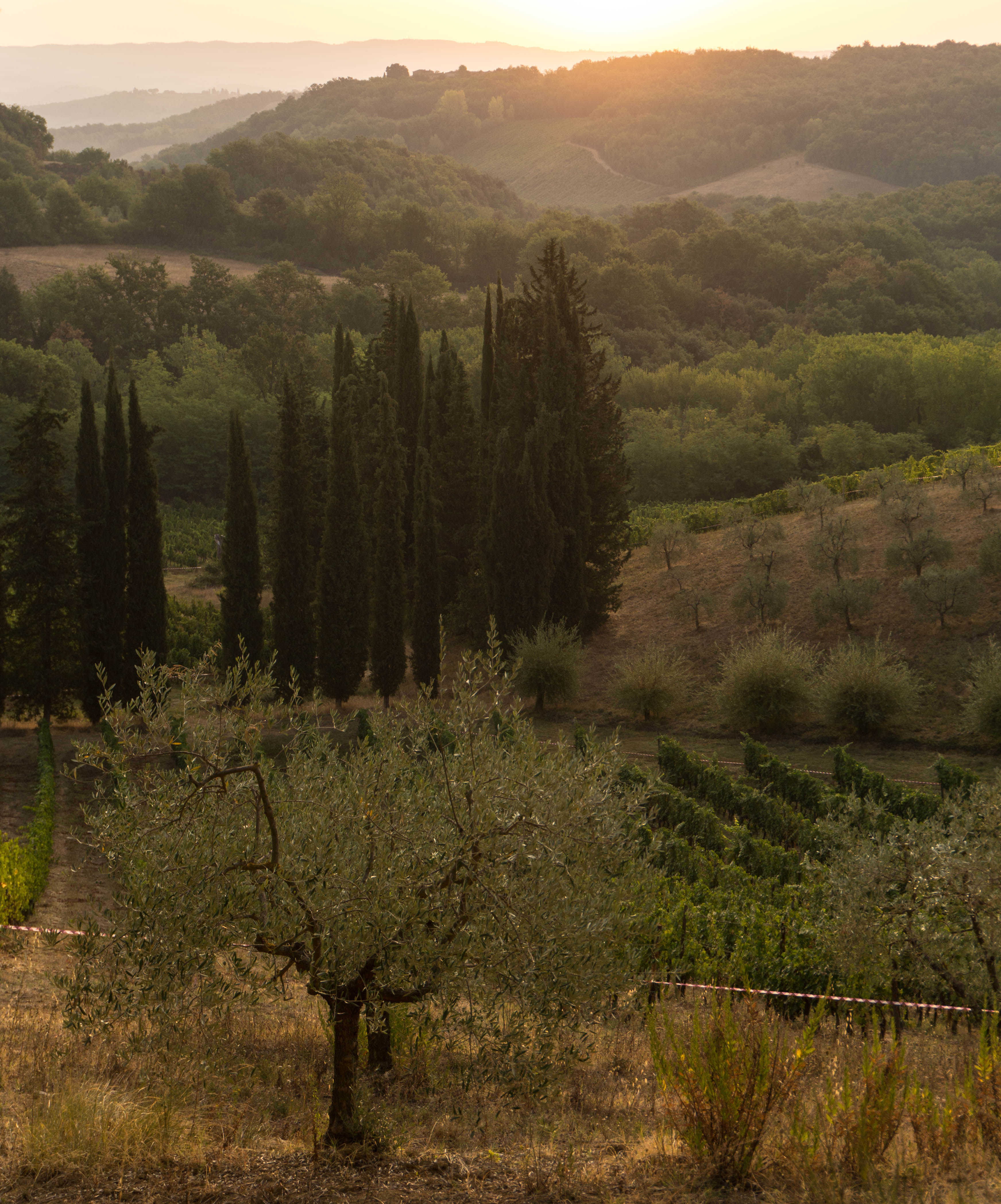
For us, walking from Lucca to Siena was also a personal thing: this is the area we lived in last year, and we absolutely loved it. We know its streets and roads – let’s say extremely well. And we were so excited to know what it feels like to actually walk back here from the UK.
We imagined that it would give us the craziest sense of achievement (and we were right).
What we didn’t know is it would also make us see the whole region afresh.
So we started in everyone’s favourite Tuscan destination, Lucca. The Via Francigena takes you through Porta San Donato under Lucca’s sixteenth century city walls. Not medieval walls, but red brick Renaissance, topped with swishy trees. We had driven to Lucca before but walking beneath its arcing doorways felt like an important moment, a dramatic entrance.
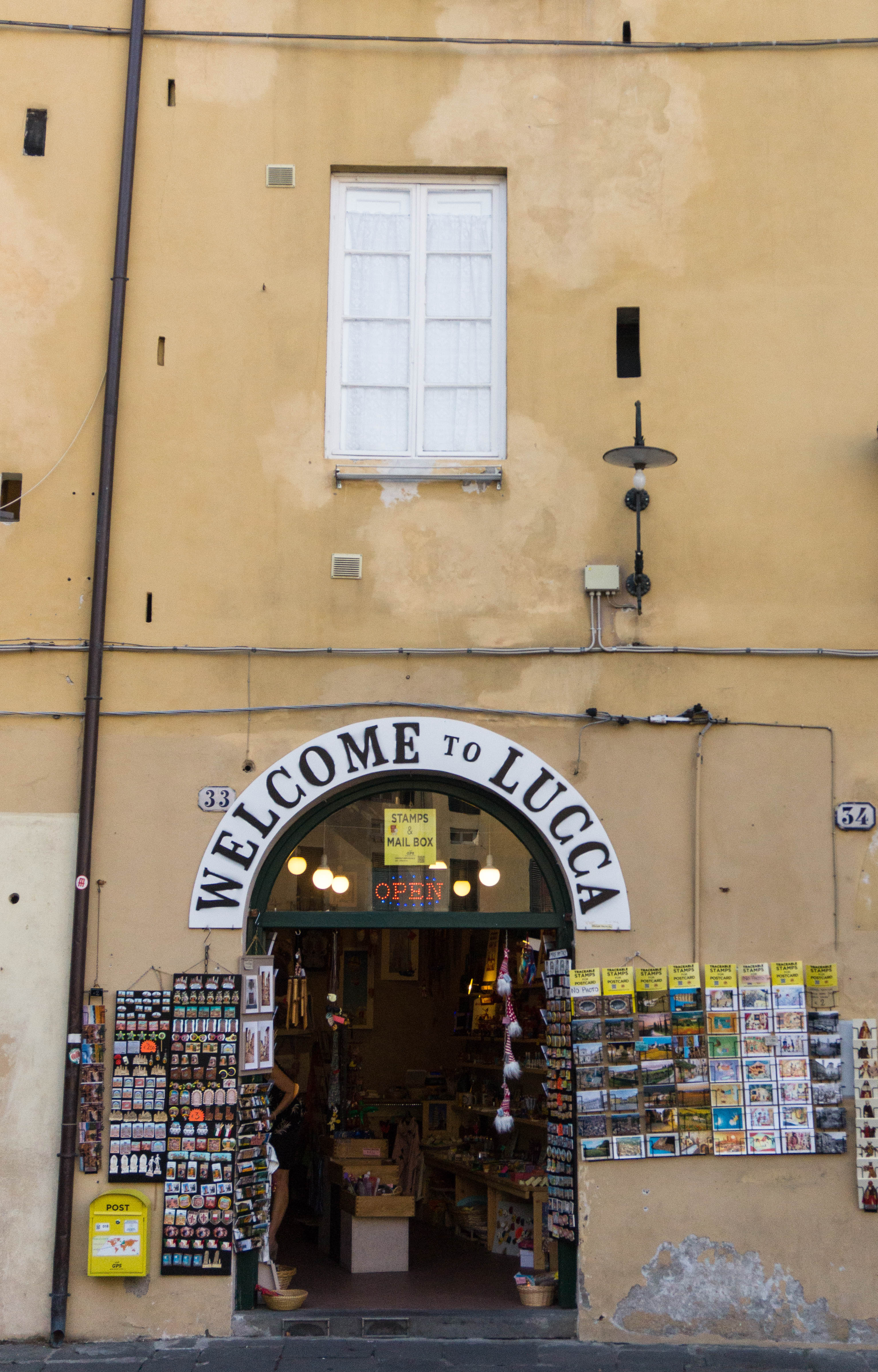
Inside Lucca is a tall and narrow labyrinth, centring around a pretty piazza curved like an amphitheatre. A river snakes through the back streets, where people leave their bicycles. The city is crammed with churches we’d never noticed before, places we now went into to collect pilgrim stamps. The Duomo has a striped marble exterior of cool green and white, and a maze etched into one of its columns – the symbol of pilgrimage. Also another must-see we hadn’t seen: the glittering façade of the Basilica of San Frediano.
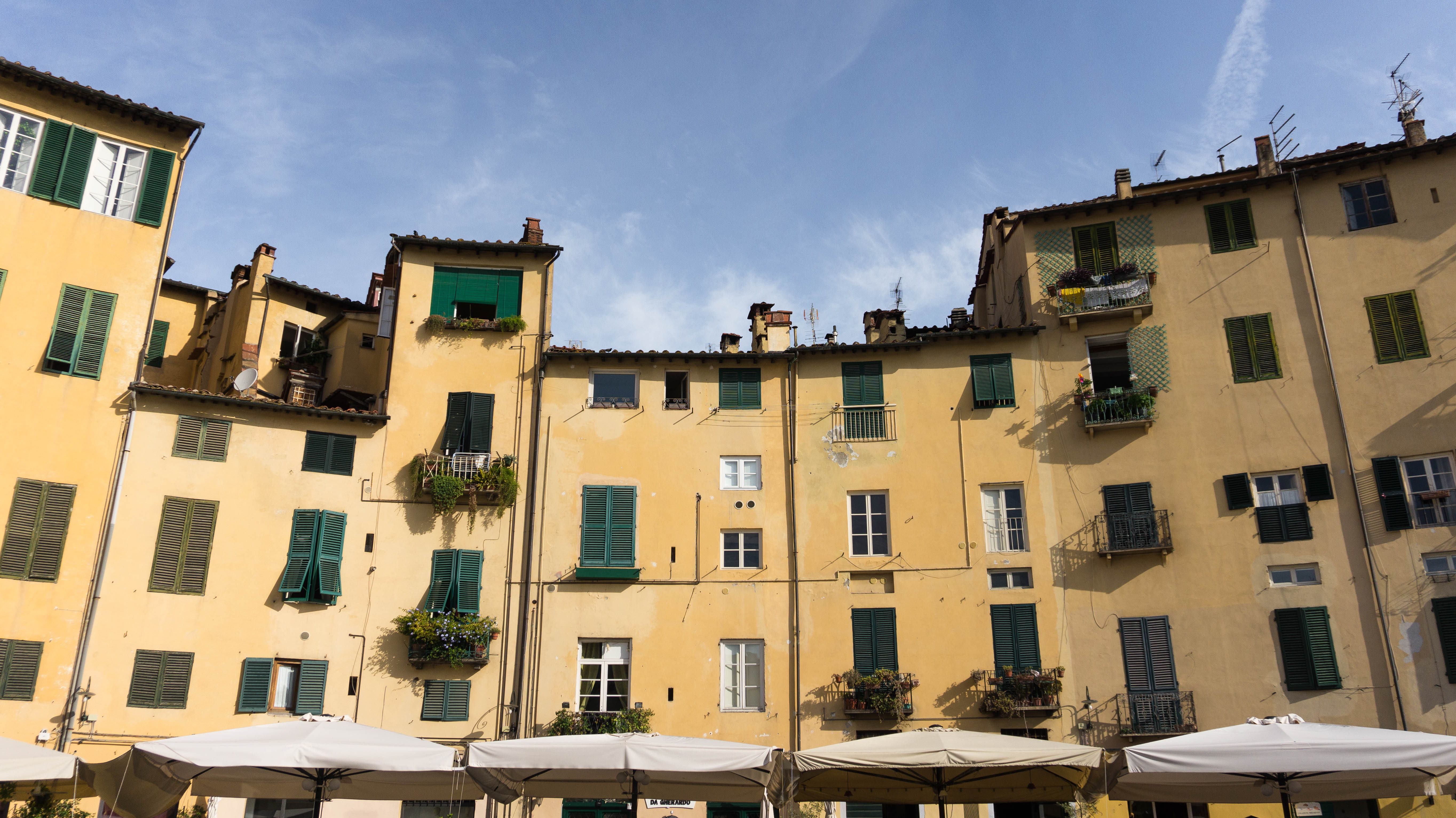
From Lucca to Siena, this is by far the most sophisticated place to visit. We loved wandering its streets, walking along the wall and picking one of Lucca’s towers to climb. We plumped for the Guinigi Tower and peeped out between the trees that grow at the top. (Turns out trees grow out of everything in Lucca.)
We caught a glimpse from the tower of the rolling hills beyond – hills we’d walked through to get here, and hills we would walk over when we leave. From Lucca to Siena, but also from Canterbury to Rome. It is a different view when you look at it with eyes like that.
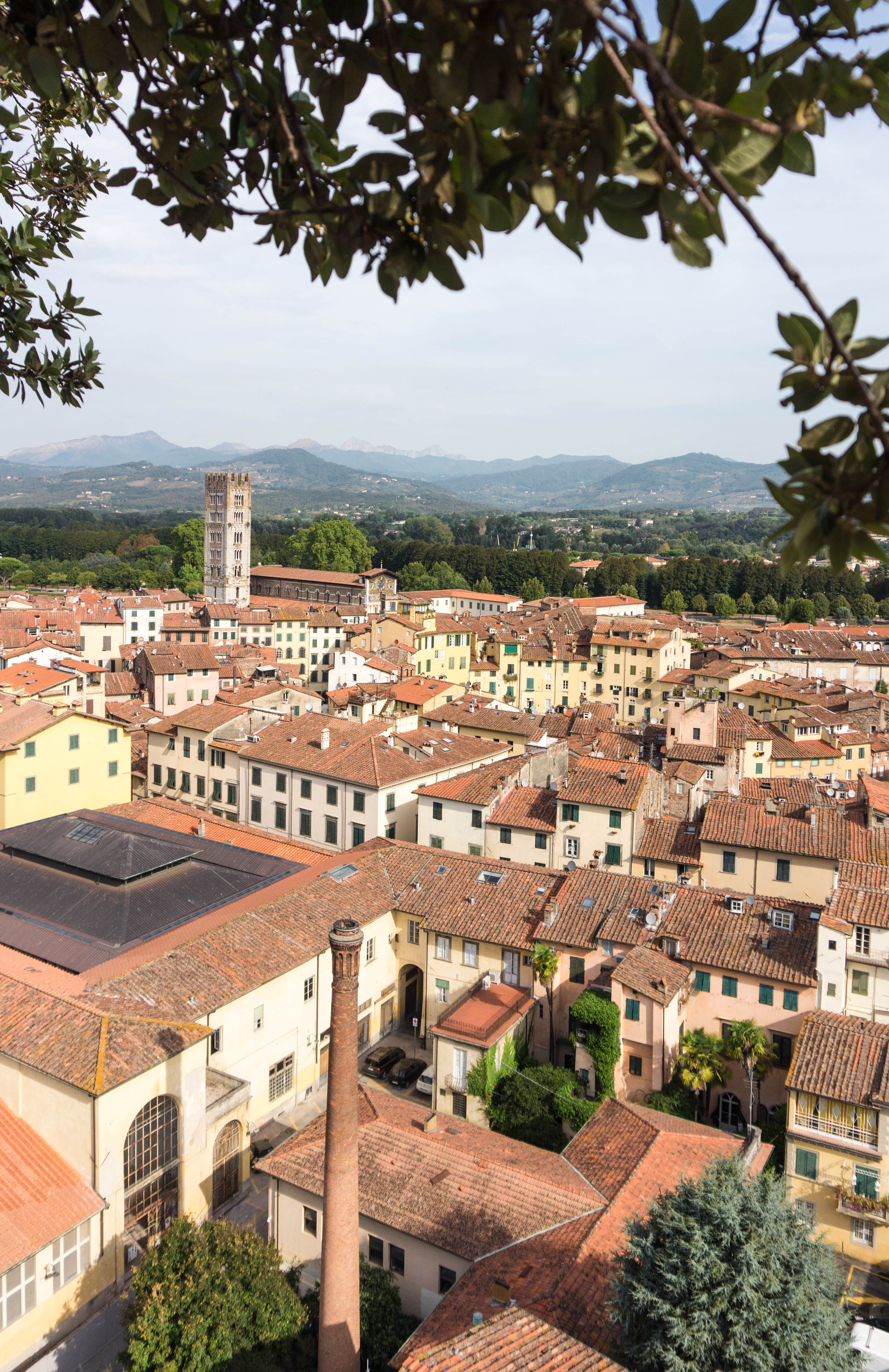
Leaving Lucca we made our way to San Miniato, crossing historic Ponte Cappiano, fortified by the almighty Medici family. We found San Miniato extravagantly lovely, its Piazza Republica brightly decorated with frescoes and completely deserted.
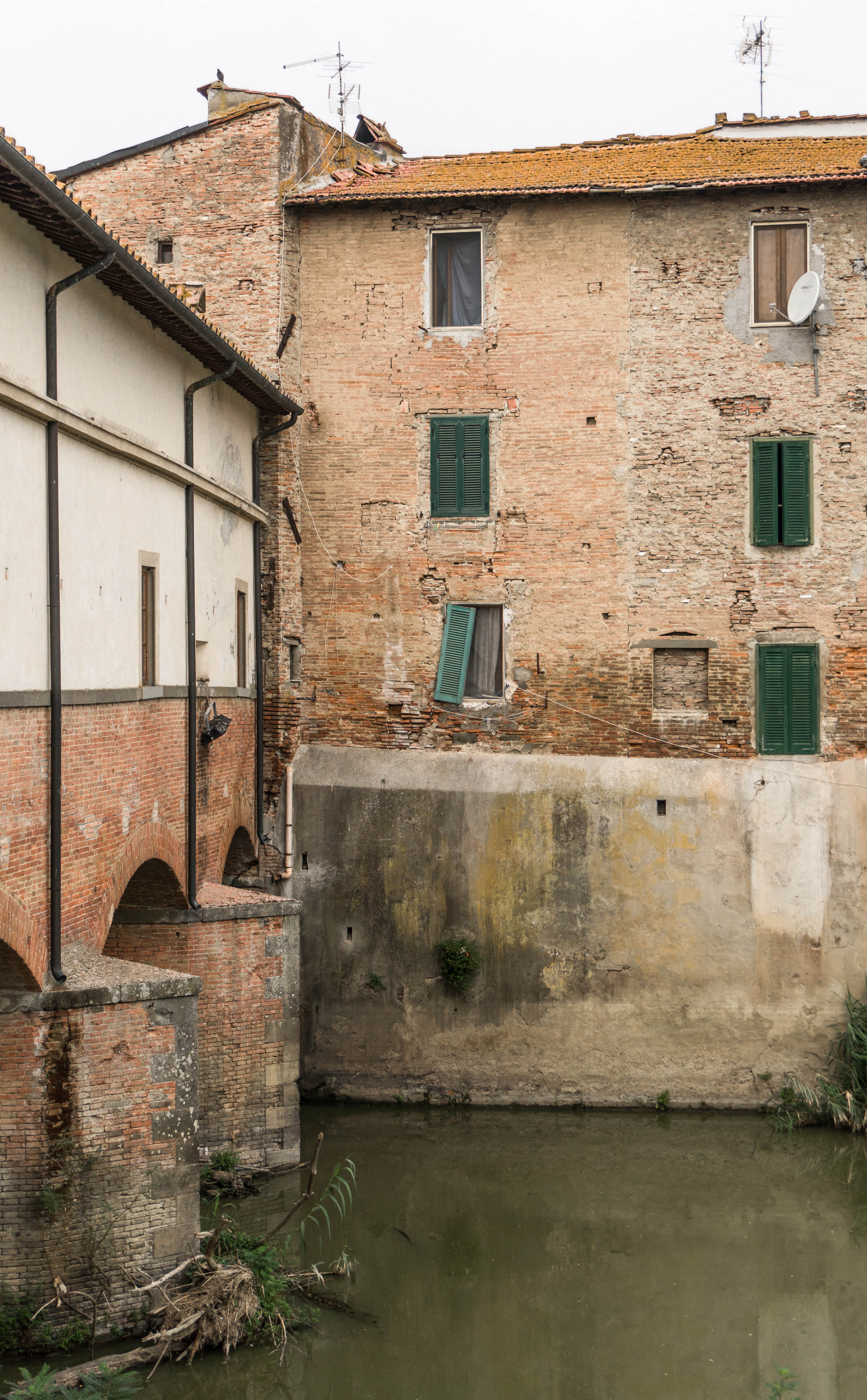
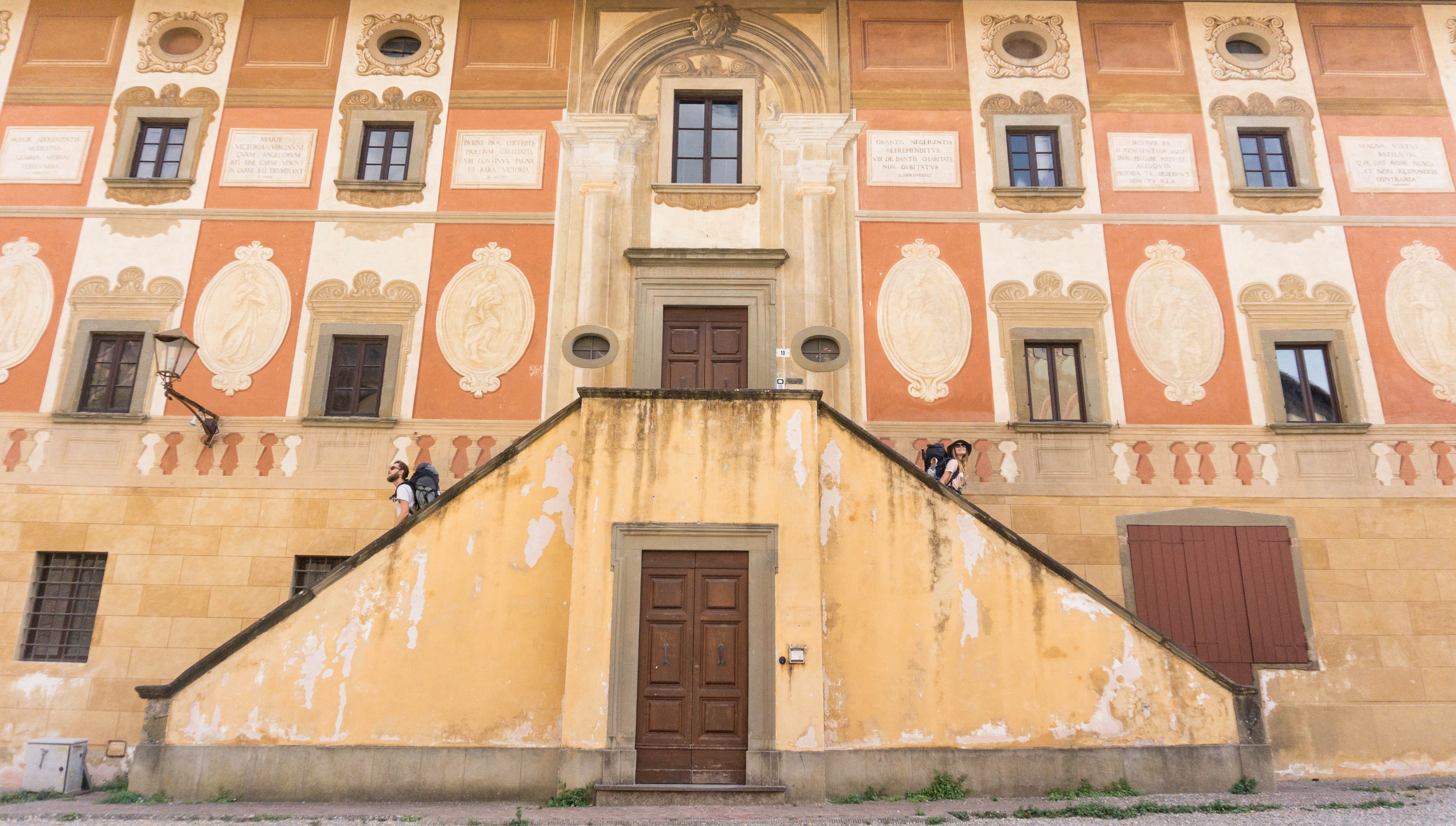
Beyond San Miniato we did indeed get our first taste of the rolling Tuscan countryside we remembered, and everyone imagines. One of the things people will tell you about Tuscany is how beautiful the light is. And it’s true: it’s like a pale gold, it bathes everything in warm, clear light. Hilly layers blue in the morning, lines of needle thin cypress trees lining chalk white drives. It’s beautiful to see, be in, and walk through.
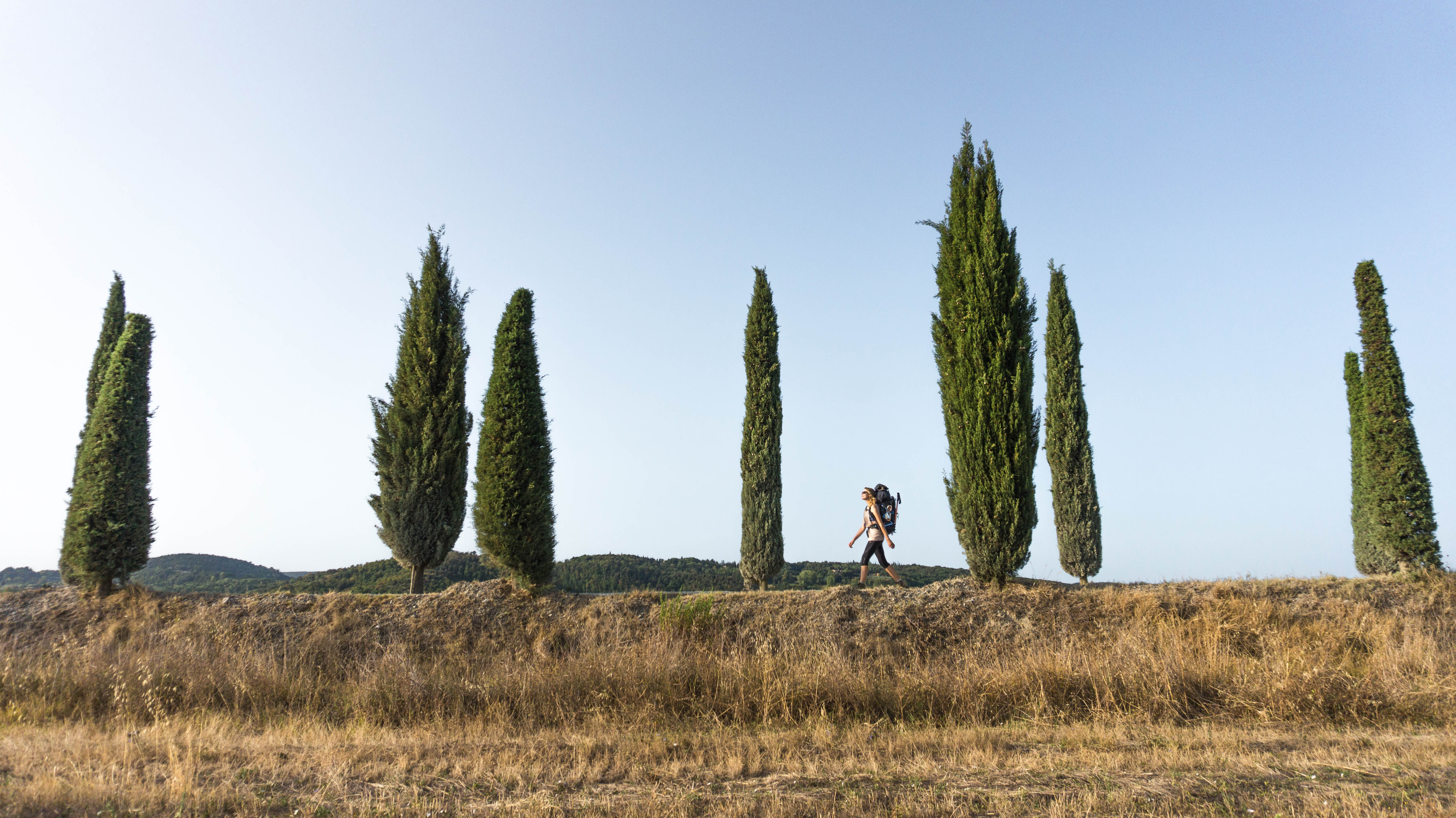
We got to witness the crazy flip side of this light, too. Getting up far earlier than we ever had before to escape summer temperatures, we experienced what we called the pre-dawn dawn. It’s when the sun first hits the horizon, and everything is fleetingly electrified by an impossible neon orange. The trees, the sky, your own skin. It disappears in a few minutes and we couldn’t quite believe what we’d seen was real.
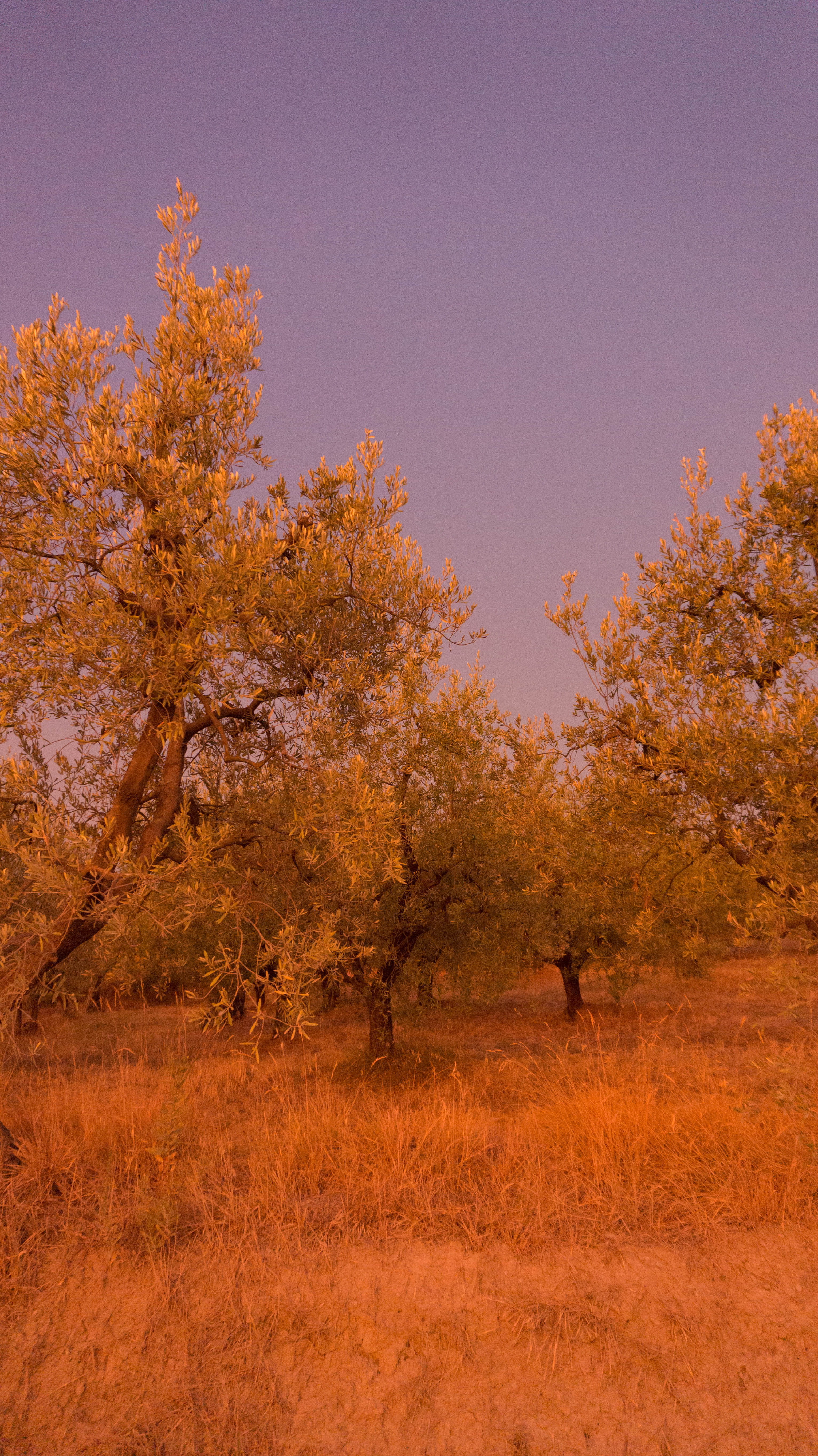
It was through this familiar/unfamiliar landscape that we made our way to one of the most visited towns in the whole of Tuscany: medieval San Gimignano. Admittedly, it’s a little bit of a circus town, with coach trips and tourists arriving from all over. But we knew it well and always thought it was stunning, deserving of all its popularity.
Thirteen huge medieval towers dominate its skyline, its squares are lined with beautiful ivy coloured shops, and it has a genuinely famous award winning gelateria.
We had visited San Gimignano every other day for the best part of a year, so thought we knew exactly where to go and what to do. But the weirdest thing: we found ourselves walking up a street we never even knew existed to get into the town. And inside: hey, was that shopfront new? Even the alleyways we did know felt new – felt better.
Even though we really liked San Gimignano before, it’s like the place we remembered was a paler imitation of this brighter, deeper place.
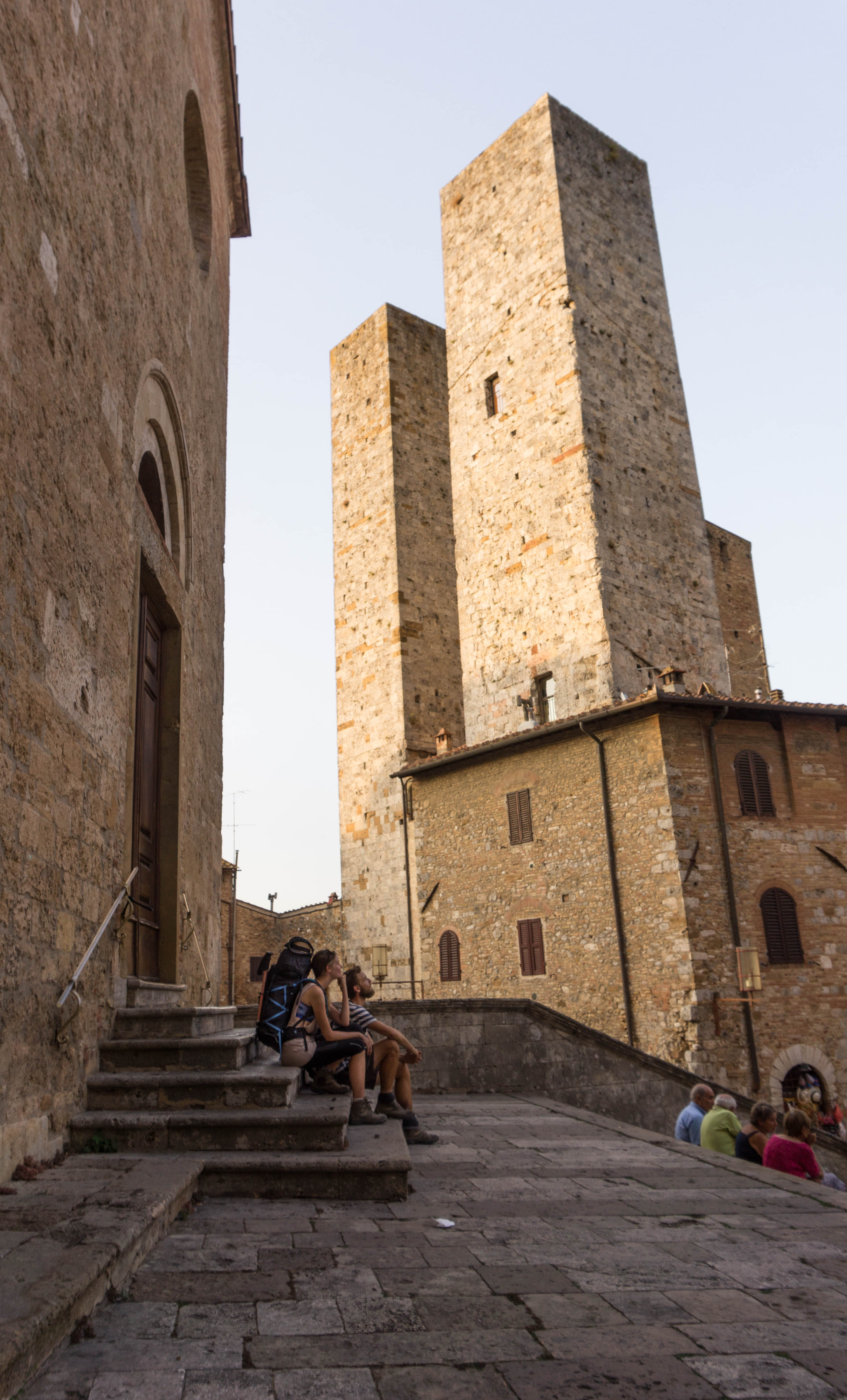
It was quite a wondrous experience. We spent longer there than we had anticipated, just ogling really. Behind schedule, we carried on to our campsite in the dark (yep, still camping) stopping in the vineyards that cluster around the town to watch the towers of San Gimignano twinkle behind us.
Never seen San Gimignano quite like this before.
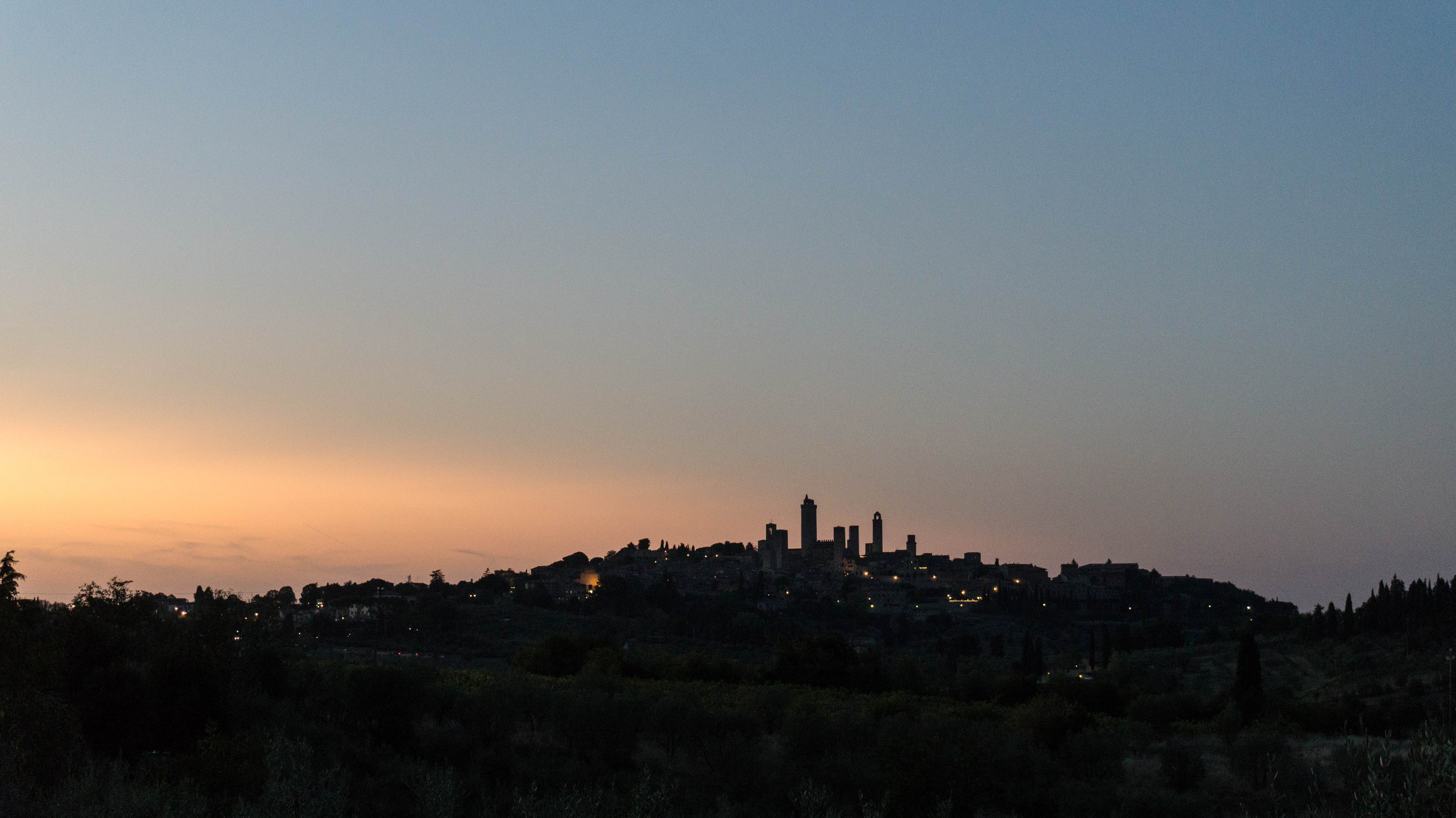
Beyond San Gimignano we dipped in and out of valleys densely wooded and quiet. The vineyards rolled around us, undisturbed. We walked past crystal-clear bathing spots on old paths littered with fossils – this was once an ancient sea bed.
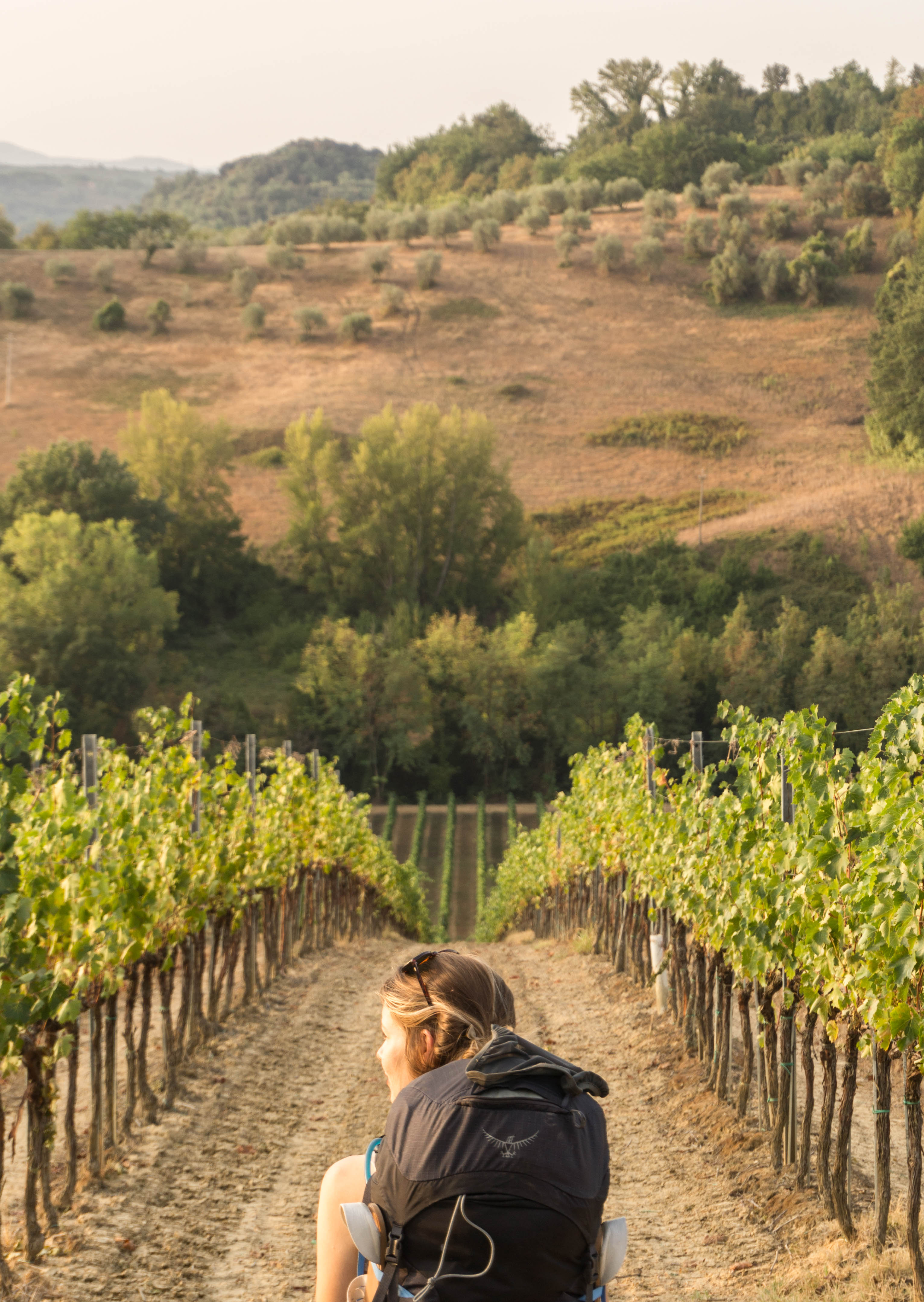
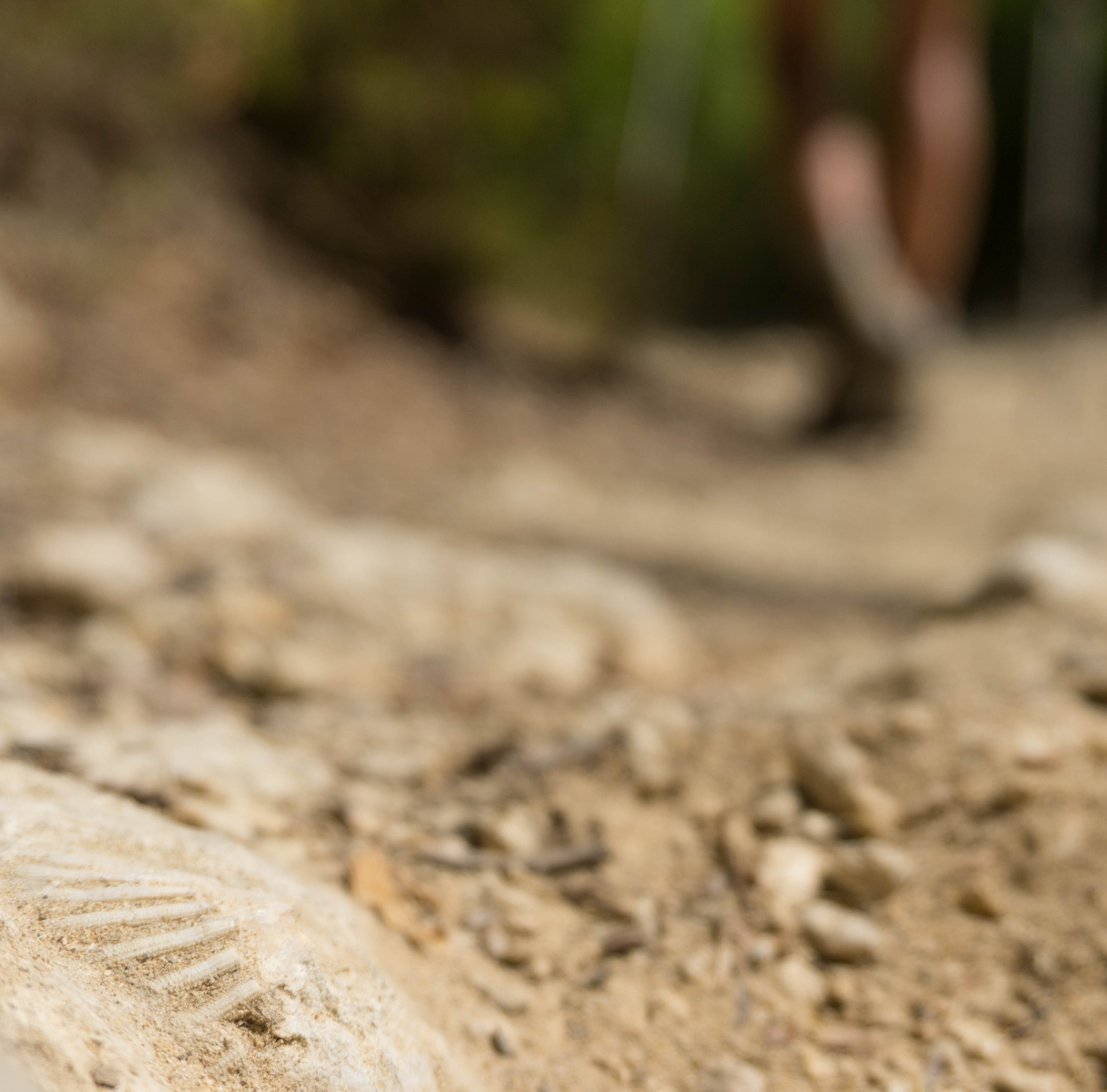
The land opened out eventually to reveal the stone crown of Monteriggioni sitting on the hill in front of us. You walk to and away from it for ages, and it’s hard not be impressed by this full round of medieval battlements. Funnily enough the fortified village inside is tiny but picture postcard perfect.
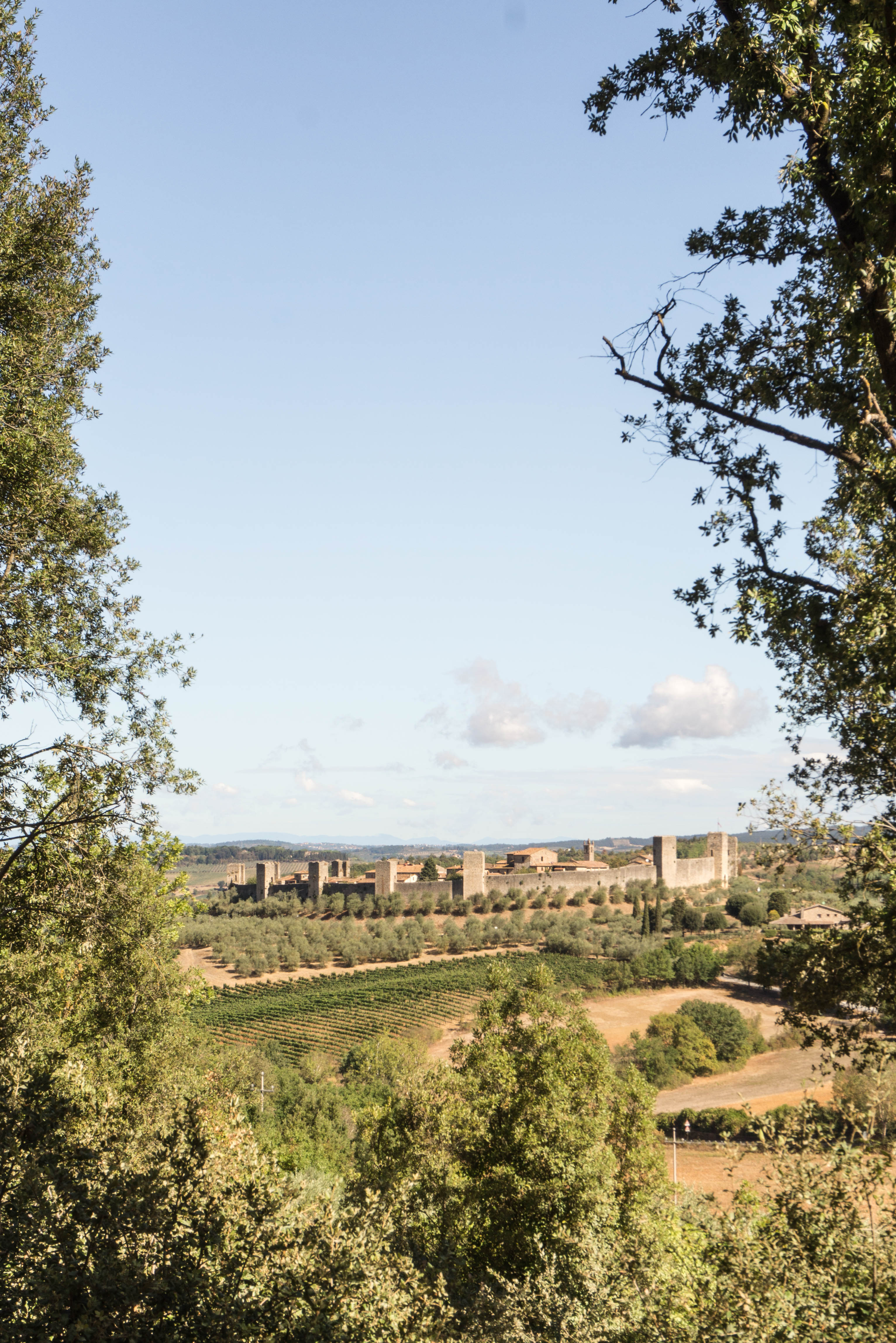
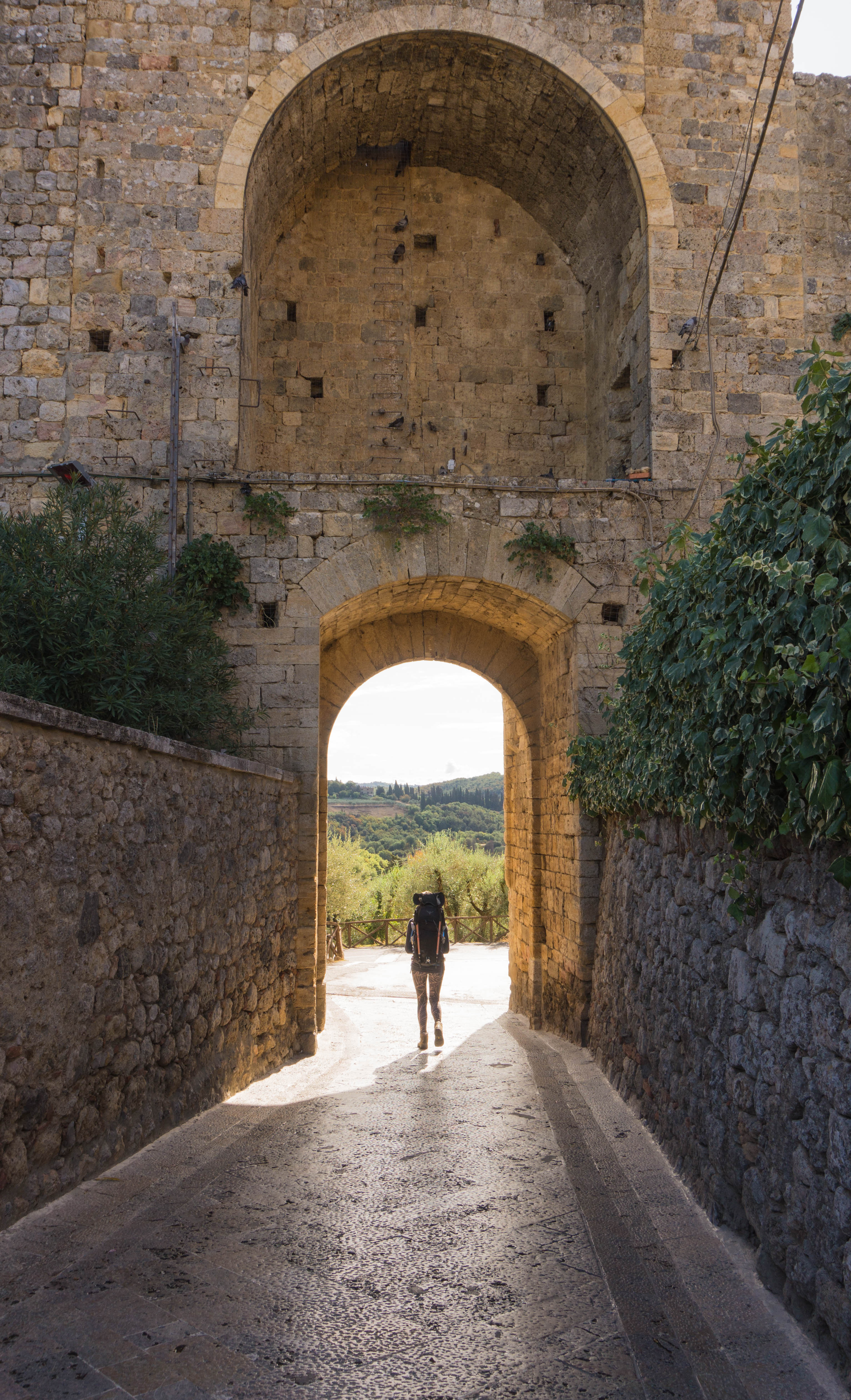
As Monteriggioni is an old defence post of Siena, you’re really only a stone’s throw away from the city once you leave, walkable in a day. It’s a surreal way to get into a city though: even only a few kilometres away from Siena, we were still walking through countryside, passing the rural Castello della Chiocciola on the way.
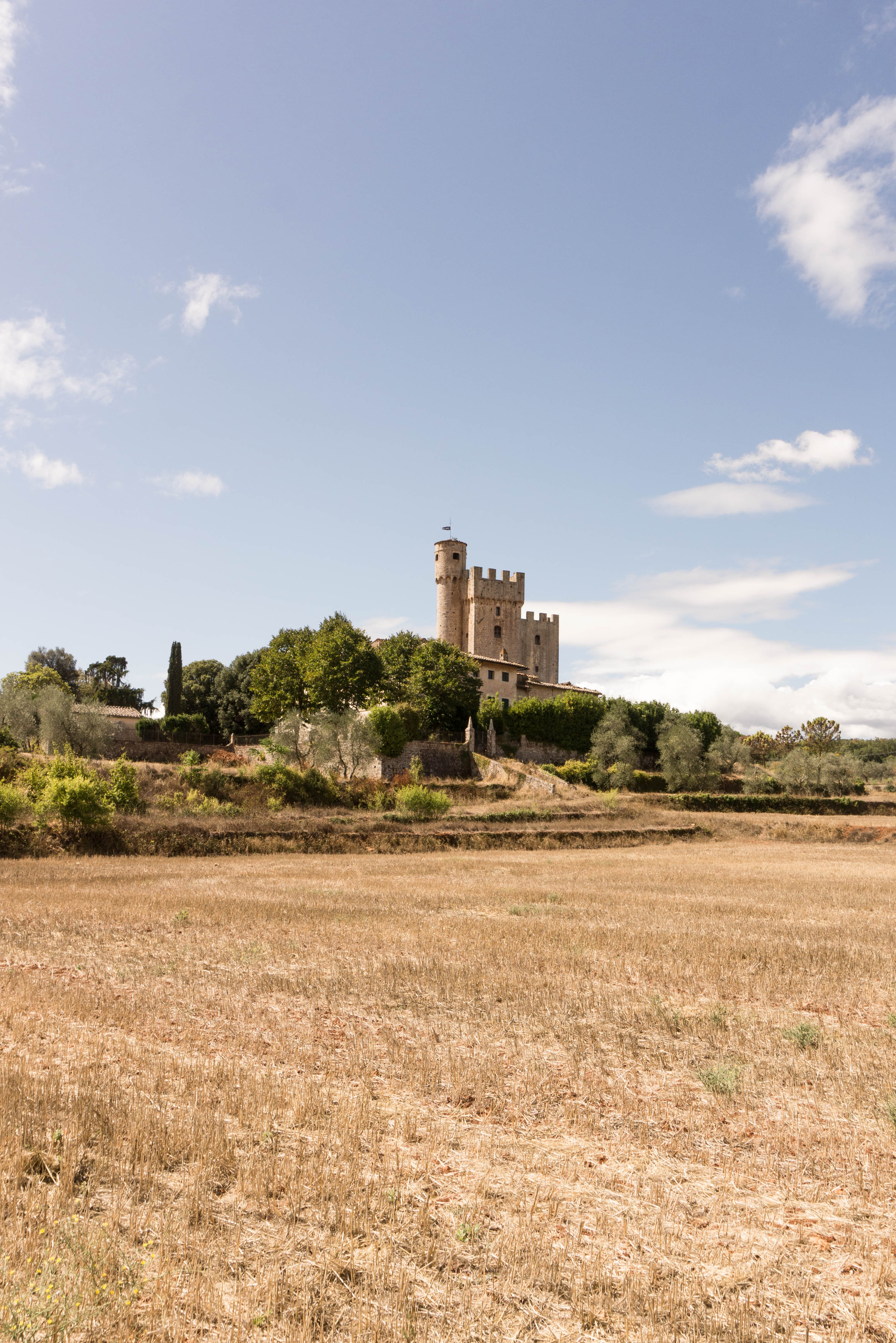
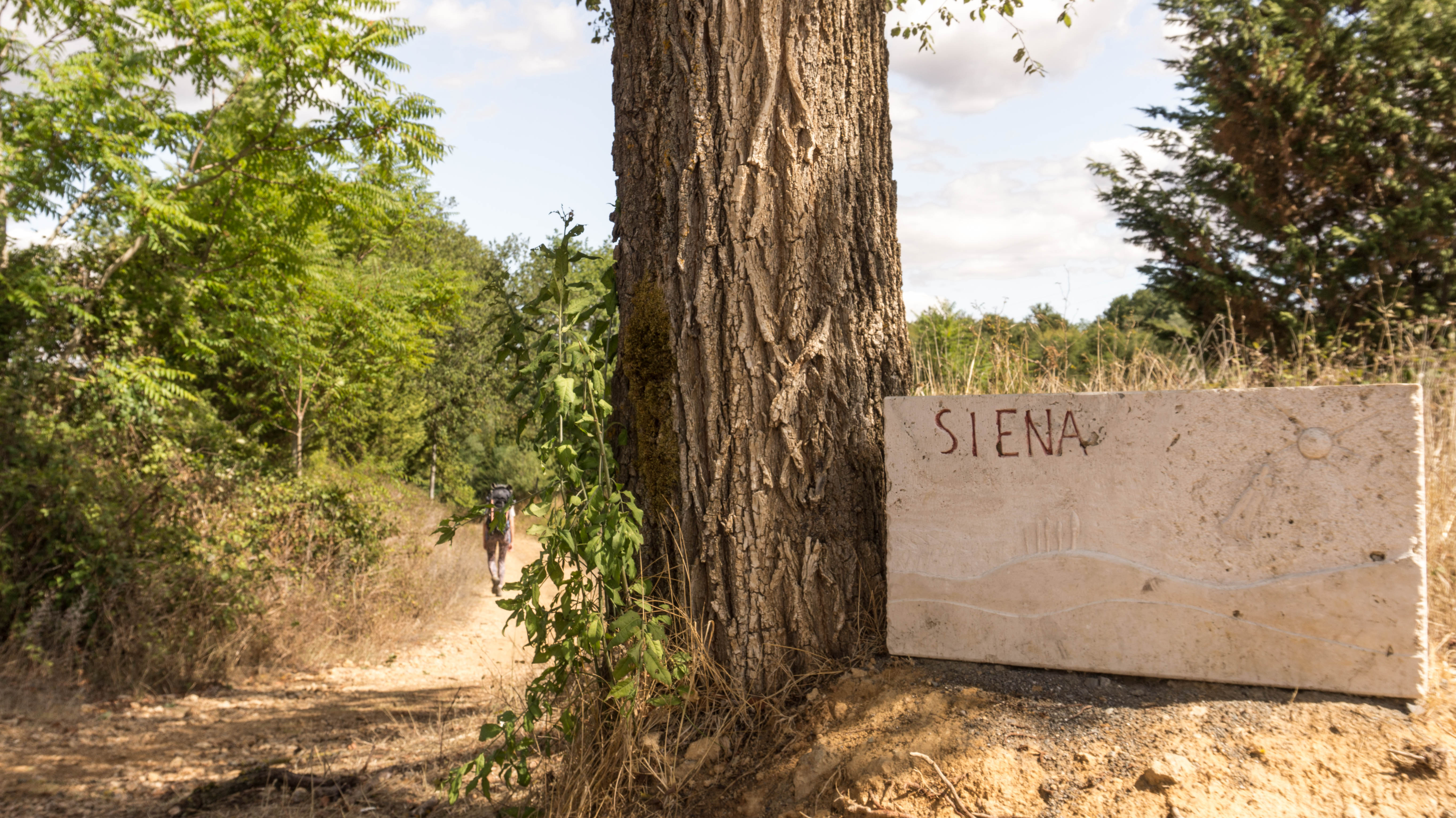
And all of a sudden, we reached the walls of the noble city of Siena. A deep, dark, secretive place, it could be one of our favourite places in all of Tuscany.
Last year we had watched the world famous Palio, a fiercely competitive horserace between the 17 districts of the city. Each contrade have their own symbol and title, their own colours, allies and enemies.
Who knew it, but the contrada that you arrive in on the Via Francigena is Istrice or ‘the Porcupine’. We saw the little animal carved into the lampposts as we walked along. So we bought a little print to remember the district that welcomed us to Siena. The Istrice contrada has a bit of personal meaning to us now.
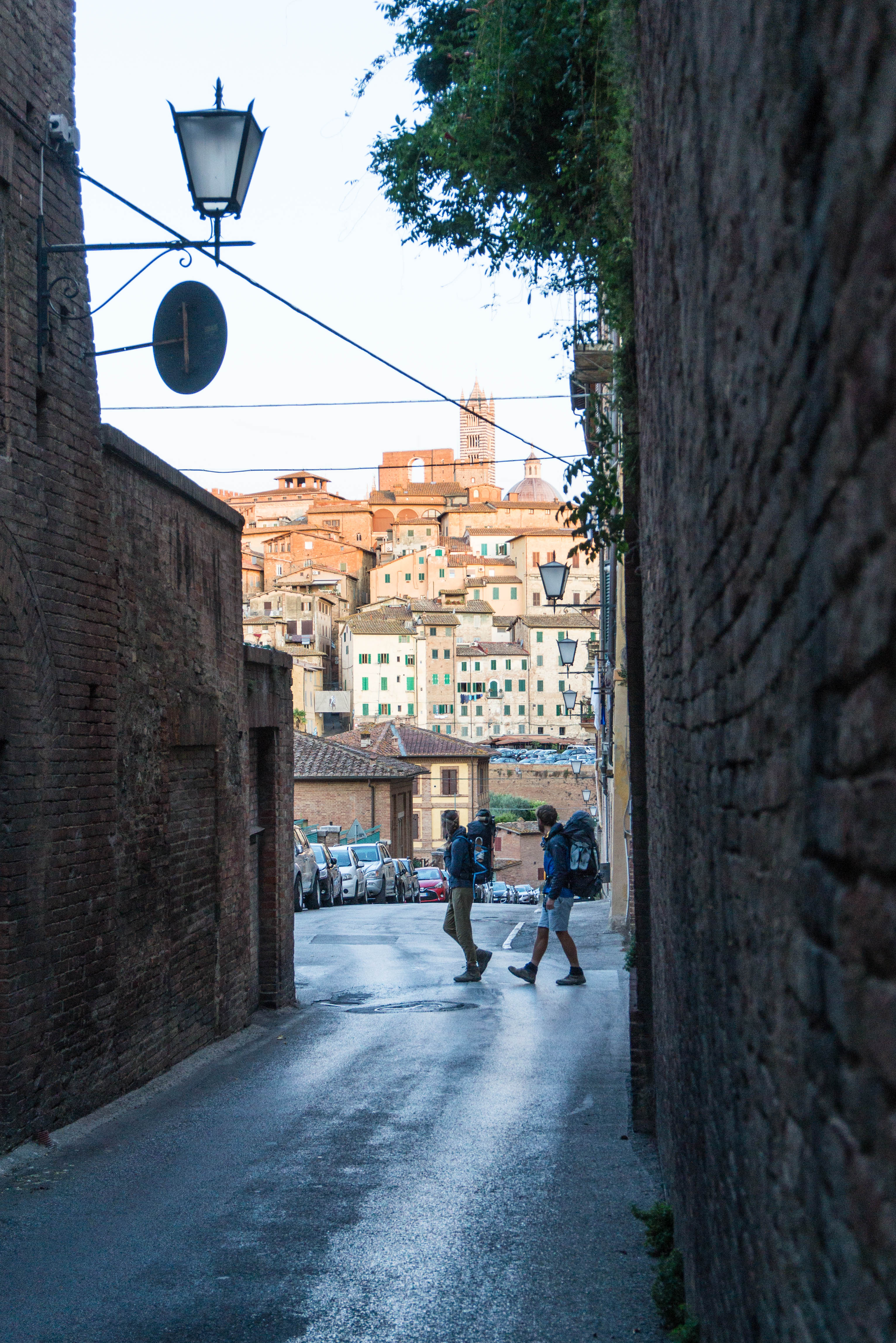
This is what we think: we set out walking this Lucca to Siena section looking forward to seeing much-loved bits of Tuscany again.
But what we didn’t count on is that the walk would in turn affect those places: would change our understanding and our memory of those places. We saw more of them, felt like we tapped more into their original identities.
Walking to and through them gave them deeper resonances beyond what we had imagined before.
If that doesn’t interest you in slow travel…
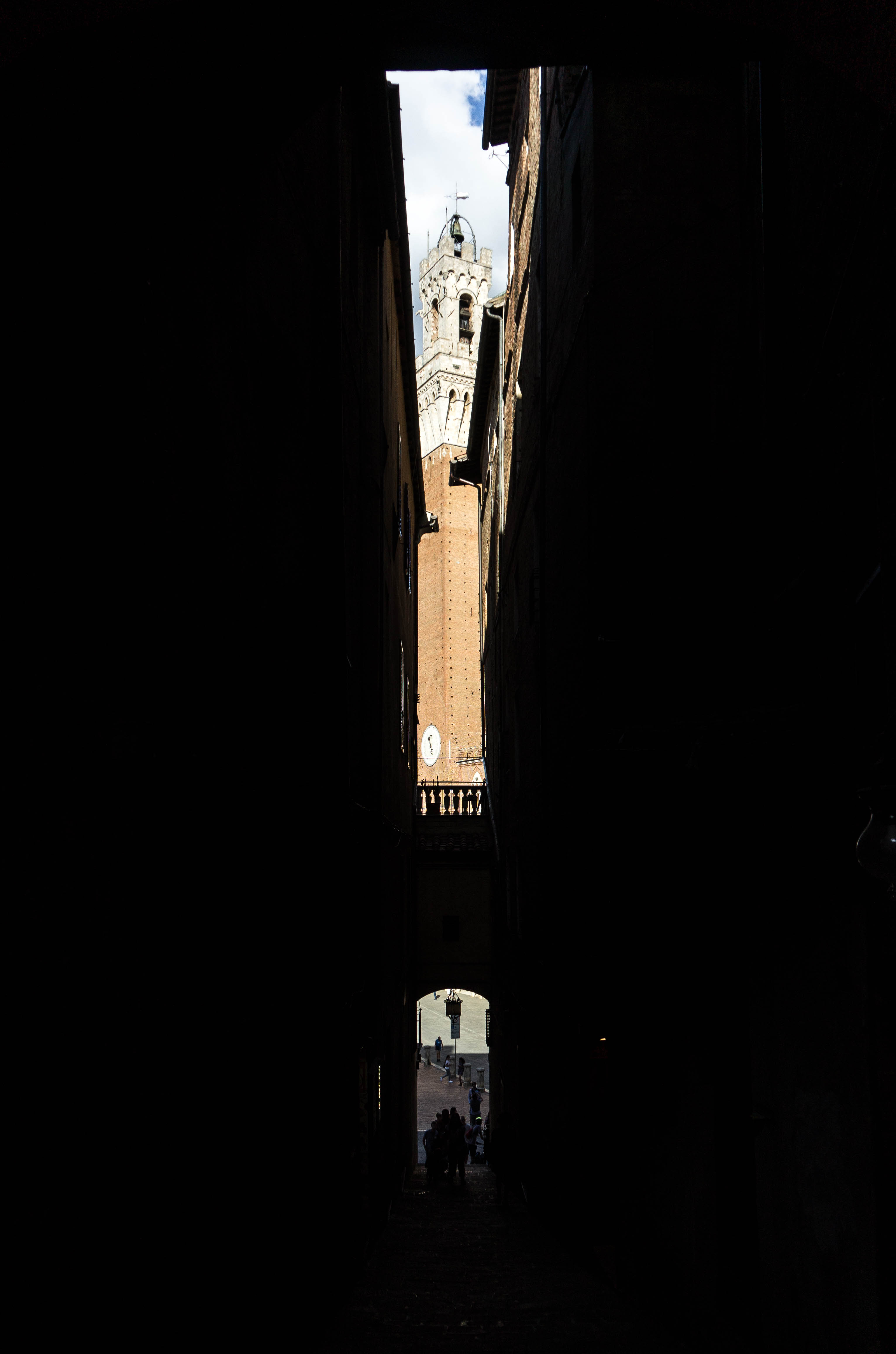

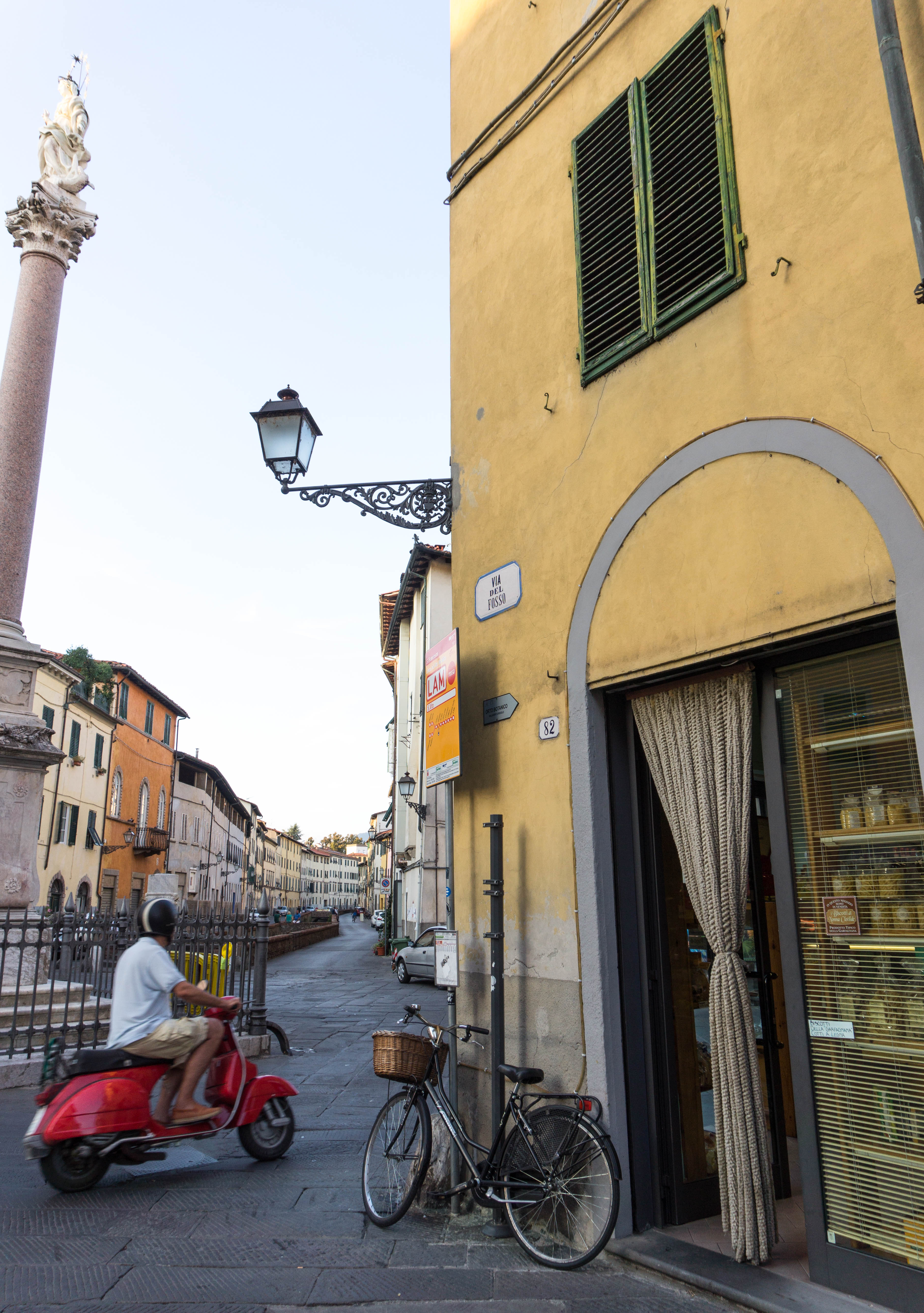
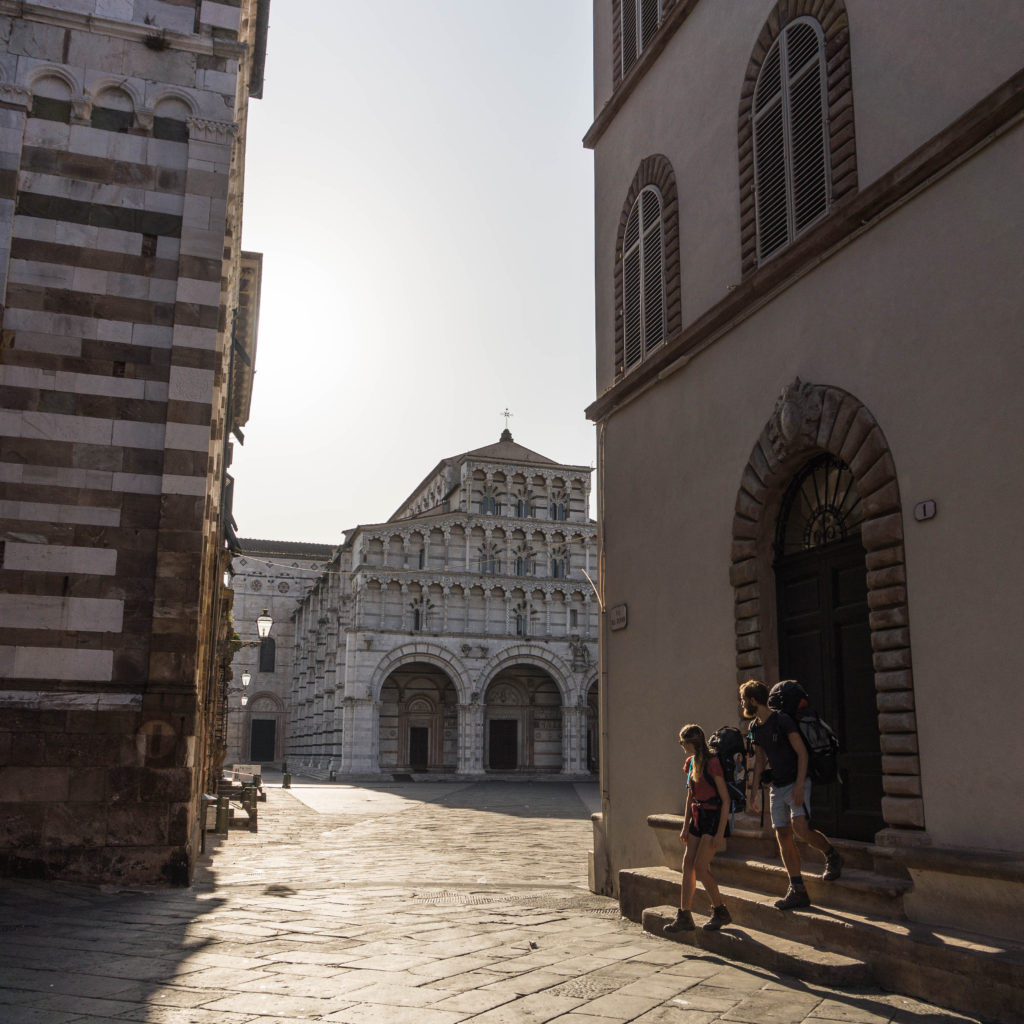
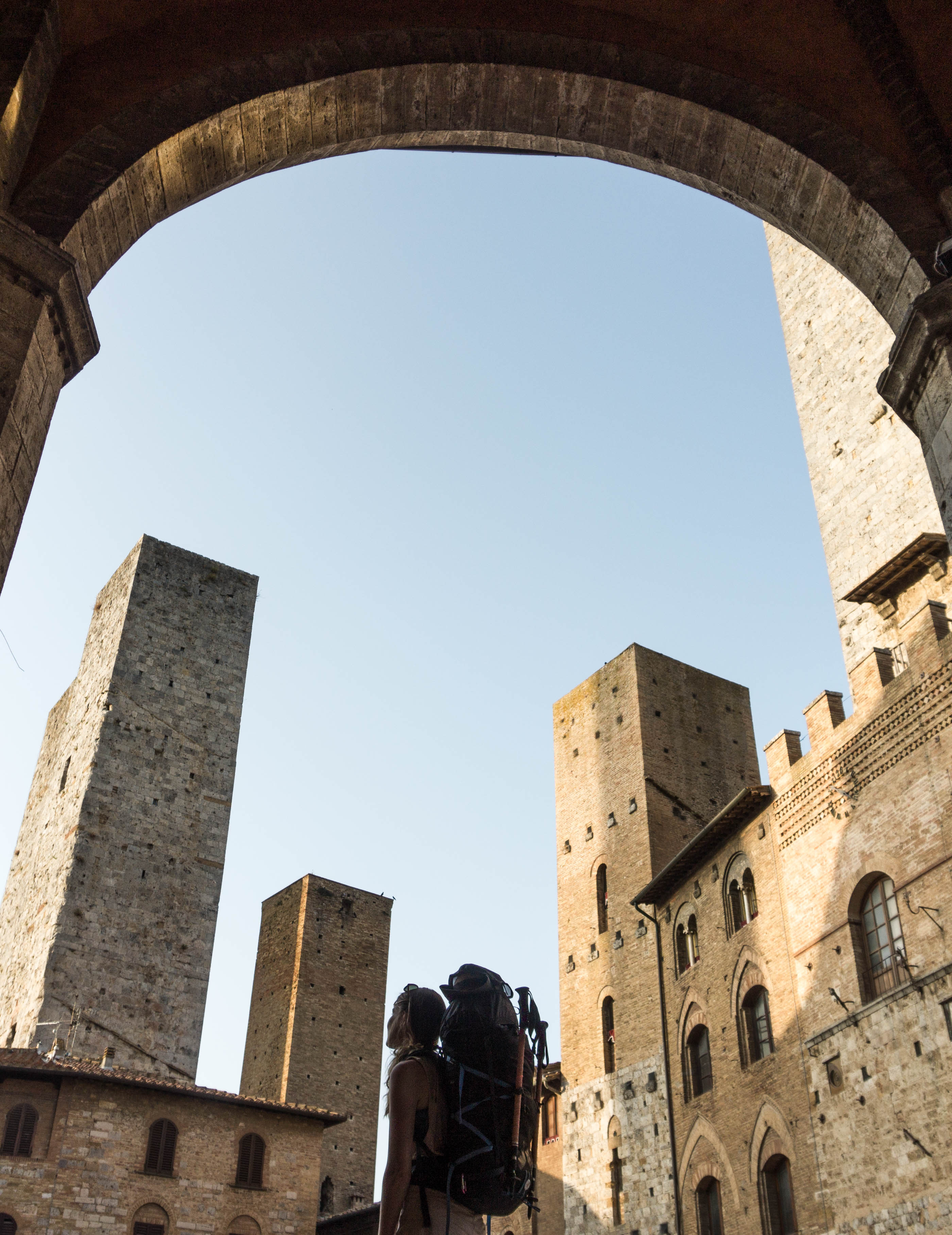
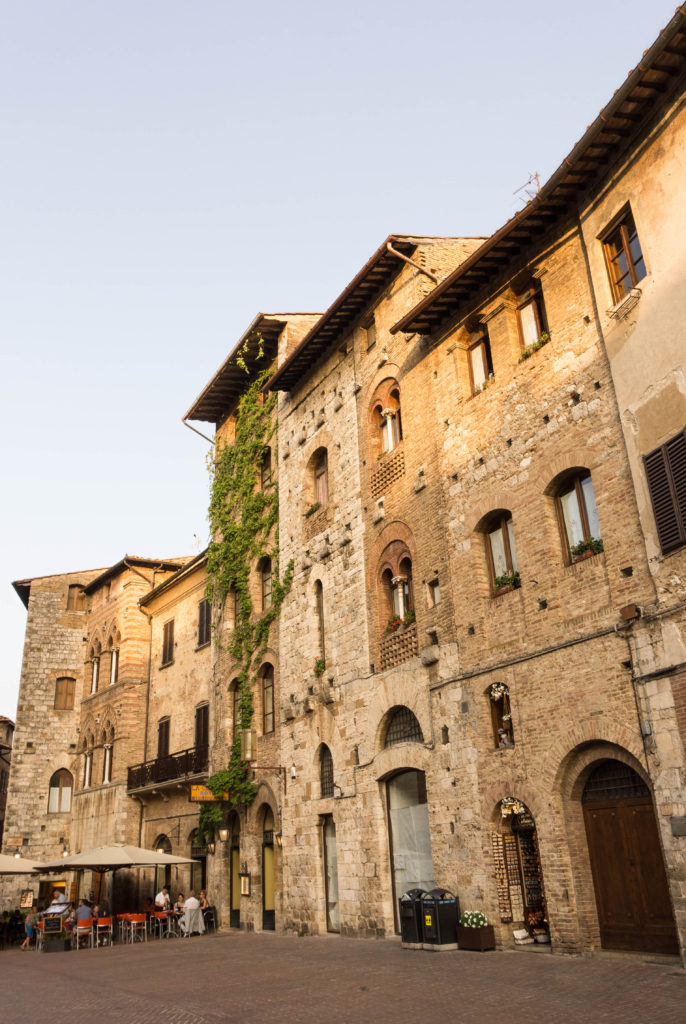
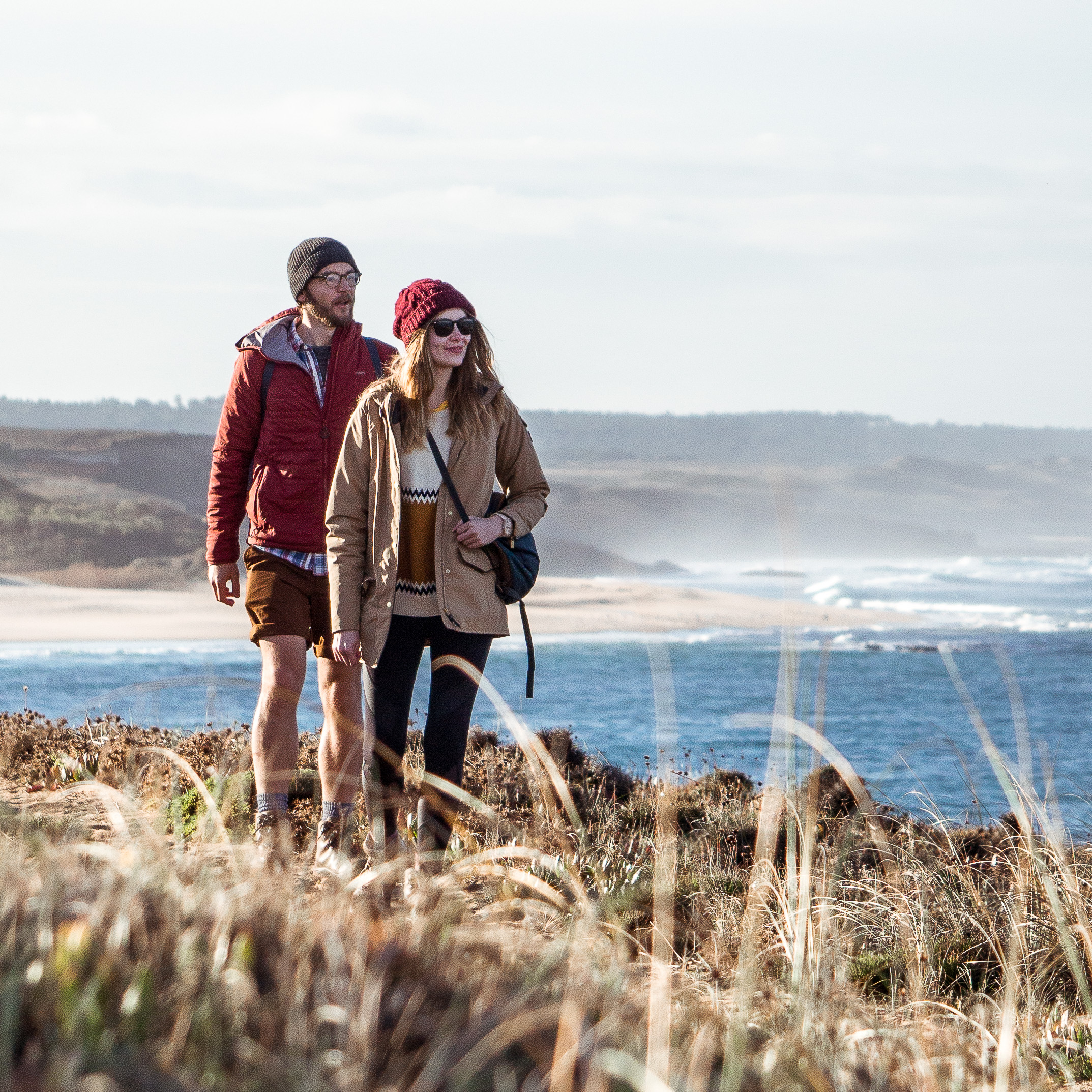
Thanks again for a very interesting and eye opening walk from Lucca to Sienna.
I am sure the excitement and anticipation was growing as you both walked towards the San Gim that you know and love so well. but then to actually discover even more amazing streets and secret places to roam around and spend time getting to know must have made it hard for you to walk away again. The pre-dawn dawn amazing orange goodbye must have helped and the photo looked stunning!!
That pre-dawn dawn was out of this world! The photo wasn’t edited, so that’s just what the camera picked up. And it really was like that. Spooky really! Thanks for the comment Patty,
Luke & Nell
Hi
Great photos!
Here’s the question – how did you reach San Miniato? I was planning to walk all the way from Lucca to Siena (starting next weekend), but all the tour information suggests using public transport for the Lucca to San Miniato section. Is there no decent path?
Best regards
simon strutt.
Hi Simon, thank you! We walked from Lucca across the Arno plain and up to San Miniato Alto. The Via Francigena is there between the two places and in decent shape. It goes through some interesting places. Many people don’t enjoy the two days walking because frankly it isn’t as impressive as what is south of San Miniato. But for the journey, we would say walk Lucca to Siena, you’ll be better off for doing it. Another option though, if you decide to start at San Miniato Alto is to walk south beyond Siena and into the Val d’Orcia. You could do San Miniato Alto to Radicofani. That way you get some of the best the VF has to offer… tempted??
Could we walk this in 12 to 15 days…and set up places to stay ahead of time? Does anyone provide pick up and drop off daily if we needed, or chose to have that….and perhaps not walk the entire walk? We are not quite as young as you folks!
Thank you for the comment Nancy, I will e-mail you a proper reply! 🙂
Hi Luke
A friend, Sandra and I are planning to walk from Lucca to Siena starting March 1 2019. We thought walking 10-20km each day might be as much as we can do. I have looked at the accommodation options provided to ensure there is something at each point we want to or need to stop.
Does the following seem feasible?
Day 1 Lucca to Porcari 10.8km
Day 2 Porcari to Chimenti 15.5km
Day 3 Ghimenti to Fucecchio 13km
Day 4 Fucecchio to Santa Maria a Monte 15.5km
Day 5 Santa Maria a Monte to San Miniato 21.2km
Day 6 San Miniato to Casstelfiorentino 18.4km
Day 7 Casstelfiorentino to Gambassi Terme 10.8km
Day 8 Gambassi Terme to San Gimignano 19.8km
Day 9 San Gimignano to Colle Val D’elsa 15.5km
Day 10 Colle Val D’Elsa to Monteriggioni 11.9km
Day 11 Monteriggioni to Siena 20.4km
We were wondering if there is a lovely thermal bathing area between Lucca and Siena.
Or would you suggest we start in San Miniato and walk beyond Siena say to Monteroni d’Arbia and beyond where we might be able to get to a better thermal bathing area?
Please note that I have chosen the town to stay based on the distance to be walked, and knowing that there is some kind of pilgrim accommodation in the town/village.
We fly out of Rome on 15th March (me to the beautiful Fiji Islands in the South Pacific and my friend to the middle of sad South Africa). We want to spend two days in Rome before we leave and two days in Florence before we start.
A big ask but would so appreciate it if you could give us your thoughts! Elizabeth
Hello Elizabeth, good to hear from you! Glad to hear you’re taking on this great section of the Via Francigena.
The walk from Lucca to San Miniato, frankly isn’t that good. You would be better to start in San Miniato and walk beyond Siena. Ideally into the Val d’Orcia. San Miniato to Radicofani would be our suggested route. And you can get to San Miniato very easily on the train from Florence. This alternative route would take you past the celebrated Bagno Vignoni thermal spa too!
By taking out the days from Lucca to San Miniato in your schedule you would be able to get down into the Val d’Orcia after a day off spent in Siena.
Also in answer to your question about thermal bathing between Lucca and Siena. Gambassi Terme has a modern facility you can stop off at.
Rome to Fiji – what an interesting route! We’d love to get to the South Pacific some day 🙂 🙂
Any other questions, e-mail me at luke@whatifwewalked.com.
Have a fantastic walk!
Luke & Nell
An enquiry from NANCY SISKOWIC in 2018 was asking for a 12-15 day route from Lucca to Siena. Do you have a good rout for this please
I could certainly create one for you…
If we were to do this walk, could we do it in somewhat of a pampered style…without heavy back packs…just day packs. Picked up and driven to starting points, nice hotels, or driven if our legs get terribly cranky? We are 78, our cousins are closer to 70, we walked part of the El Camino a couple of yeats ago…loved it…and were pampered!!!
Lovely! I love the way you described EVERYTHING. Thank you.
Thank you Bertha!
Your post makes me even more excited to go! 🙂
I will only be hiking from Siena to Monteriggioni (yes, in the opposite direction but only due to practical reasons as I’ll be based in Florence and will be doing it next month with quite high temperatures, so best to start early in Siena than only at 10.30 in Monteriggioni I think).
I was wondering whether you could tell me about this specific leg? Whether it’s easy to follow, how long it takes approximately (of course depending on condition but just to have an idea), whether there is any water along the way? This is the first time I’ll be doing something like this by myself and I’ve already downloaded the app.
Thanks in advance for your advice 🙂
It’s a largely shady section, so quite good for higher temperature days. There’s one seating area where there is water available, but this was three years ago when we were there! Take 3 litres yourself to be safe. And have a fantastic time!